Getting Here
Faculty of Education, Shimane University
1060, Nishi-Kawatsucho, Matsue, Shimane prefecture, 690-8504
Japan
Via public transportation
· From Matsue Station (Central station of Matsue city)
| Taxi |
|---|
10 min. from/to the station, about 1,000JPY |
| Bus | |||
|---|---|---|---|
| The bus pool is located at the north side of the station (right turn at the ticket gate in the station). | |||
| Track #1 (Circle Lines) | City bus | [92] North Circle Line, Counterclockwise | 14 min. |
| Track #2 (For Shimane Univ.) | City bus | [12] for Kawatsu, Shimane Univ. | 20 min. |
| [14] for Heisei Newtown | 20 min. | ||
| [15] for Ajisai Danchi (housing complex) | 20 min. | ||
| Ichibata bus | for Mihonoseki Terminal | 18 min. | |
| [19] for Marine Plaza | 18 min. | ||
· To Matsue Station
| Air | ||||
|---|---|---|---|---|
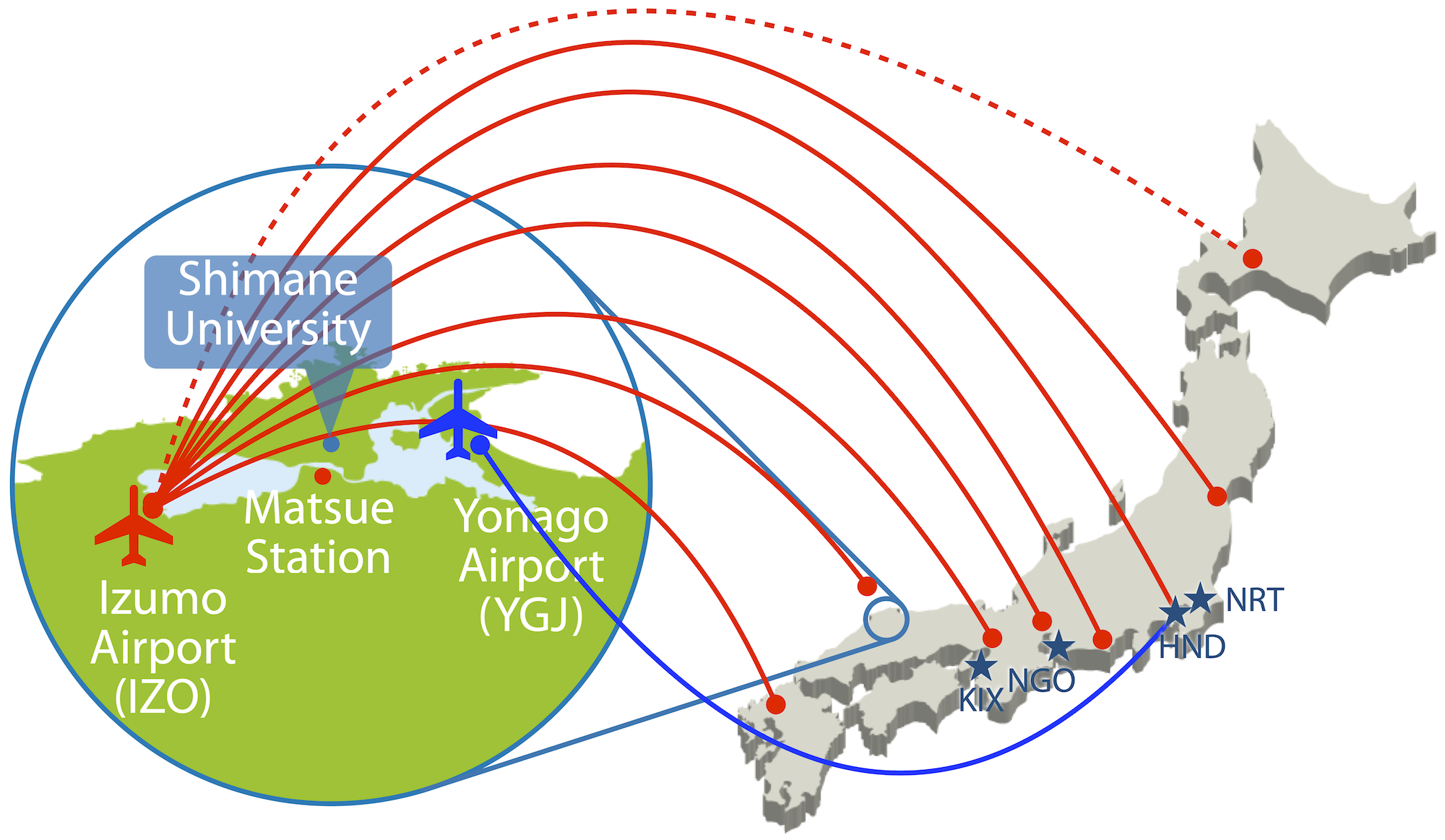 |
||||
| Tokyo Int'l, Haneda (HND) | All Nippon Airways (ANA) | 80 - 90 min. | Yonago Airport (YGJ) | ⇄ Matsue Sta. 45 min. by Shuttle Bus |
| Japan Airlines (JAL) | 80 min. | Izumo Airport (IZO) | ⇄ Matsue Sta. 35 min. by Shuttle Bus |
|
| Sapporo, New Chitose (CTS) | 120 min., Summer only | |||
| Osaka, Itami (ITM) | 50 min. | |||
| Fukuoka (FUK) | 70 min. | |||
| Oki (Intraprefectural) | 30 min. | |||
| Sendai (SDJ) (Available until Jan. 8, 2024) |
Fuji Dream Airlines (FDA) (cs with JAL) |
90 min. | ||
| Shizuoka (FSZ) (Available until Jan. 8, 2024) |
70 min. | |||
| Nagoya, Komaki (NKM) | 60 min. | |||
| From Overseas | ||
|---|---|---|
NGO (Nagoya Chubu Int'l), FUK and CTS also have a few flights. Regional flights to East Asia (mainly to South Korea and China) are available at many airports, including YGJ. |
||
| Tokyo Narita int'l (NRT) NRT ⇄ HND 65 - 85 min. by bus 90 - 115 min. by train |
Osaka Kansai int'l (KIX) KIX ⇄ ITM 70 min. by bus Train route to Matsue is also available (see below). |
Nagoya Chubu int'l (NGO) NGO ⇄ NKM 100 min. by bus and train |
| Railway | |||
|---|---|---|---|
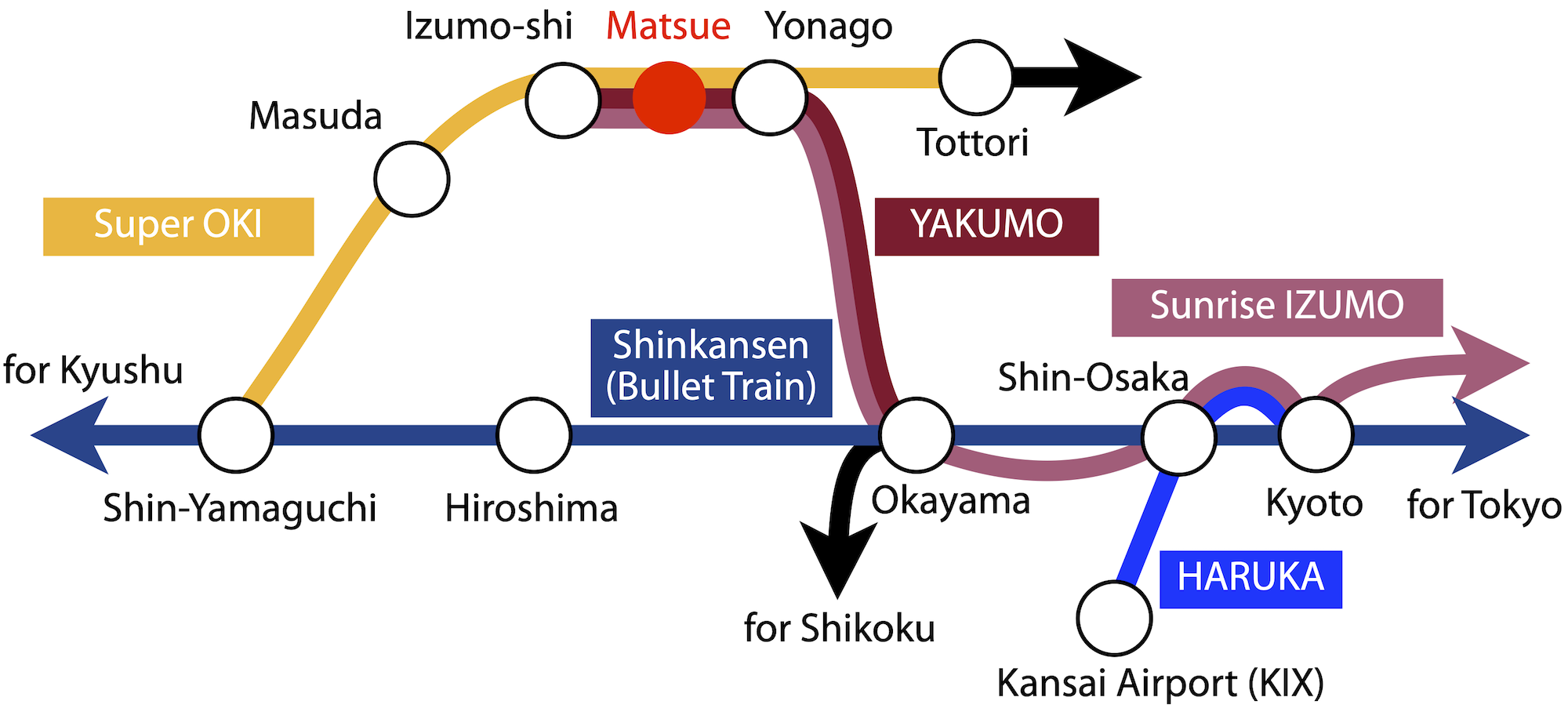 |
|||
| Okayama Station | LTD Exp. 'YAKUMO' | hourly coming in daytime | 160 min. |
| Shin-Yamaguchi Station | LTD Exp. 'Super OKI' | 3 trains / day | 225-240 min. |
| Tokyo Station | LTD Exp. 'Sunrise IZUMO' | Private cavin, Strech-out seat, Shower available | Overnight Train |
| KIX ⇄ Shin-Osaka 60 min. taking the LTD Exp. 'HARUKA' Shin-Osaka ⇄ Okayama 50 min. taking the Shinkansen 'NOZOMI' Superexpress |
|||
| Express Bus | |||
|---|---|---|---|
| Tokyo | Ichibata bus, Chugoku JR bus, WILLER, Orion bus | overnight | |
| Nagoya | Chugoku JR bus | overnight | |
| Kyoto | Chugoku JR bus, Nishinihon JR bus | 300 min. | |
| Osaka | Chugoku JR bus, Ichibata bus, Hankyu bus | 280 min. | |
| Kobe | Chugoku JR bus, Shinki bus | 240 - 260 min. | |
| Okayama | Chugoku JR bus, Ryobi bus, Chutetsu bus, Hinomaru bus | 190 min. | |
| Hiroshima | Ichibata bus, Hiroden bus | 200 min. | hourly coming in daytime |
| Fukuoka | Chugoku JR bus, JR Kyushu bus | overnight | |
While You're Here
· On Matsue campus
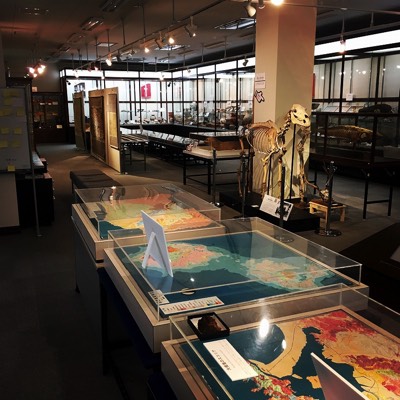
1st floor of Faculty of Life and Environmental Sciences build. #3
Open: Mon - Sat 10:00 - 17:00.
Closed on Sunday and Public holidays.
The museum that exhibits various sample materials that our university has collected over the years during our education and research. Materials from various fields of research, such as rocks, minerals, fossils, plants, animals, archaeological materials, painting materials, and folk materials, especially those related to the Shimane region are exhibited. An introduction to the history of Shimane University and current research are also included.
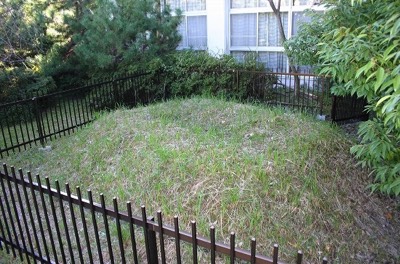
Near cafeteria
It is a front and rear burial mound in the latter half of the 5th century. In May 1958, the internal main body of the Sugadaoka Tumulus, which was removed during the construction of the campus site, was relocated and restored. This burial mound was on a hill about 50 meters west of it, with a body length of about 30 meters and a height of about 3.5 meters. A type of "pebbles", which is a simplification of a pit-type stone chamber, is made by combining more than 136 stones, and the floor is slightly higher in the north where the head is placed. Crystals and glass beads were detected from the positions of both arms on the floor as a burial item during excavation, and a considerable amount of cylindrical haniwa pieces were found to be scattered on the slope.
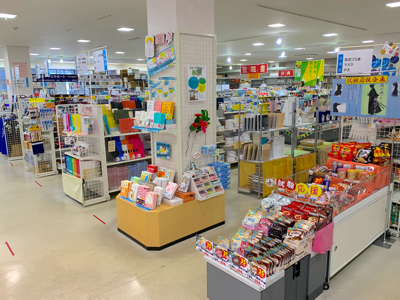
1st floor of University Union
Open: Mon - Fri 8:00 - 19:00.
Closed on Saturday, Sunday and Public holidays.
Shop at the Shimane University Coop for SU-branded goods, university farm products and other souvenirs.
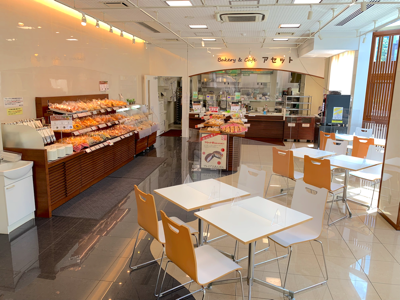
1st floor of University Union
Open: Mon - Fri 10:00 - 15:00.
Closed on Saturday, Sunday and Public holidays.
ASSET provides freshly baked bread in the store. Students can enjoy freshly baked bread, pasta, snacks and freshly brewed coffee in the calm atmosphere of the bakery.
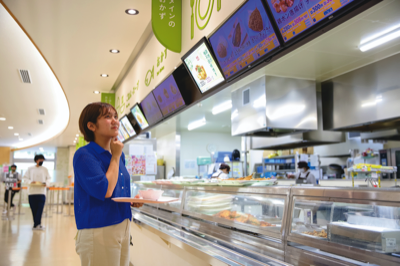
Campus Square
Open: Mon - Fri 7:45 - 19:30, Sat 11:00 - 13:30.
Closed on Sunday and Public holidays.
Cafeteria "Nicora" next to Sogno is also available (serves Halal menus).
· Around Matsue campus
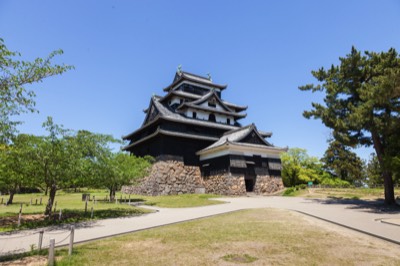
1-5, Tonomachi
Matsue Castle was constructed from 1607 to 1611 by Horio Yoshiharu, the first daimyō of the Matsue Domain, during the early Edo period. Ownership was passed to the Izumo branch of the Kyōgoku in 1633 and then the Matsudaira, a junior branch of the ruling Tokugawa clan, in 1637. The Matsudaira donated Matsue Castle to the city of Matsue in 1927.
Matsue Castle is one of few remaining feudal Japanese castles in their original wooden form and not a modern concrete reconstruction. Built after the last great war of feudal Japan, the castle has survived earthquakes, fires, wars and other causes that destroyed or damaged other Japanese castles. Several castle buildings were demolished during the early Meiji period with only some of the original keep and stone walls existing today. Matsue Castle, standing on the shores of Lake Shinji, is one of Japan's Three Great Lake Castles and the heart of Matsue's central riverside district. (from Wikipedia)
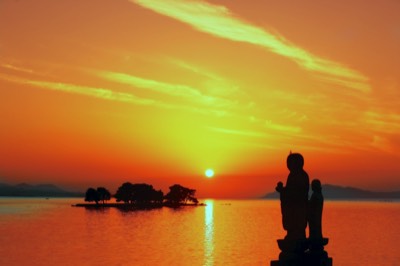
Lake Shinji, the 7th largest lake in Japan, is a brackish lake that is a mixture of fresh water and sea water. In particular, the beauty of the evening scenery, which changes its expression every moment, is superb, and has become a symbol of Matsue, a water city.
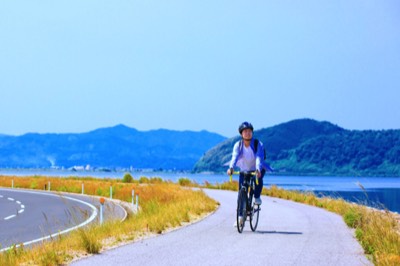
Nakaumi
A 72.6 km cycling route that circles Nakaumi, which is recognized as a wetland of international importance as a habitat for waterfowl and is registered under the Ramsar Convention. You can enjoy cycling while enjoying the scenery of the lakeside, such as Eshima Ohashi, which has famous steep slope, and Daikonjima, which is the number one peony production area in Japan. Rental bicycles are also available.
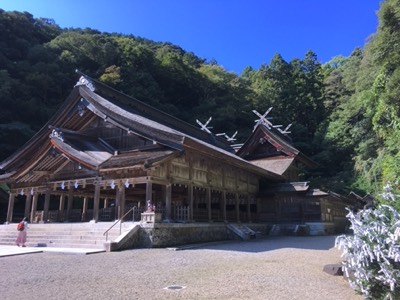
608, Mihonoseki, Mihonosekicho
Miho Jinja is a Shinto shrine in Matsue. The characteristic architectural style of the Honden (main hall, a sacred place where gods are believed to reside) is called "Miho-zukuri", which is a combination of two Hondens of Izumo-taisha's Taisha-zukuri style. This is an Important Cultural Property. Reflecting the architectural style, two gods are enshrined. One is "Kotoshironushi no kami" (Ebisu god), the other is "Mihotsuhime no mikoto". In addition to the divine virtue of prosperous business as the Ebisu god, it is worshiped as the god of fishing and shipping, and the god of warding off insects in rice fields. Also, there are many dedications of musical instruments to the god of "musical instruments".
Ebisu God was also the god who consulted and made a decision as to whether or not the earth, which was the territory of his father, Okuninushi, should be handed over to the descendants of Amaterasu Omikami. For this reason, it is said that visiting both "Miho Shrine" and "Izumo-taisha", which enshrines "Okuninushi no kami", will bring further benefits.
195, Kidzuki-higashi, Taishacho, Izumo city
Izumo-taisha (Izumo Grand Shrine), officially Izumo Ōyashiro, is one of the most ancient and important Shinto shrines in Japan. No record gives the date of establishment. Located in Izumo, Shimane Prefecture, it is home to two major festivals. It is dedicated to the god Ōkuninushi (Ōkuninushi no Ōkami), famous as the Shinto deity of marriage and to Kotoamatsukami, distinguishing heavenly kami. The shrine is believed by many to be the oldest Shinto shrine in Japan, even predating the Ise Grand Shrine.
A style of architecture, Taisha-zukuri, takes its name from the main hall of Izumo-taisha. That hall, and the attached buildings, were designated National Treasures of Japan in 1952. According to tradition, the hall was previously much taller than at present. The discovery in the year 2000 of the remains of enormous pillars has lent credence to this.
The shrine has been rebuilt every 60 to 70 years to maintain the power of the kami and maintain architectural techniques. This regular rebuilding process is called "Sengū" and has long been practiced at a handful of important Shinto shrines, the Ise Grand Shrine being rebuilt every 20 years.
Several other buildings in the shrine compound are on the list of Important Cultural Properties of Japan. (from Wikipedia)

Under construction